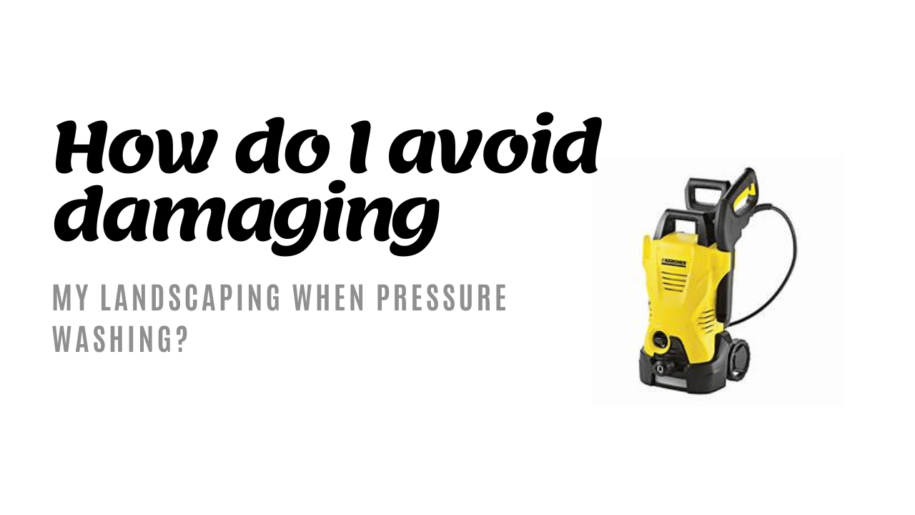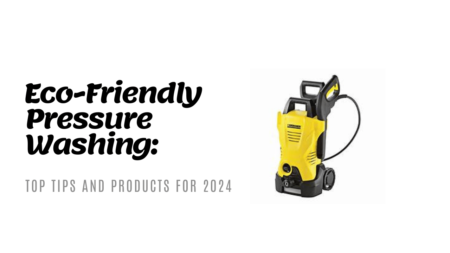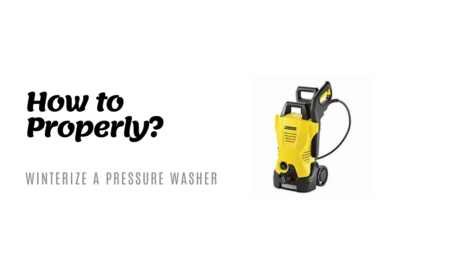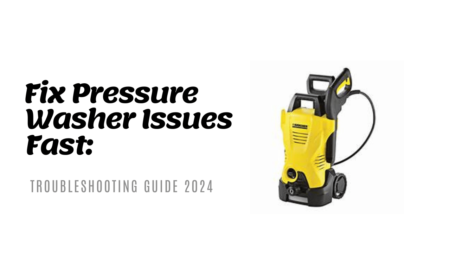
Pressure washing is a powerful tool for cleaning exteriors and hard surfaces around your home. However, it can also pose a risk to your landscaping if not done carefully. High-pressure water can easily damage plants and soft surfaces.
This article will guide you through the steps to safely use a pressure washer, ensuring your landscaping remains intact and vibrant.
Understand Your Equipment
Before starting your pressure washing project, it’s crucial to understand your equipment. Pressure washers come in various sizes and power ranges, typically measured in pounds per square inch (PSI). For residential use, a washer with 1,500 to 3,000 PSI is usually sufficient. It’s important to:
- Choose the right nozzle: Different nozzles control the water spray pattern and intensity. Use wider angle nozzles (such as 40 degrees) for a gentler wash suitable for delicate areas near landscaping.
- Adjust the pressure: Start with the lowest pressure setting and increase gradually as needed to avoid excessive force that can damage plants and softer surfaces.
Knowing your equipment helps prevent damage and ensures effective cleaning.
Preparation Steps
Proper preparation can prevent damage to your landscaping when pressure washing. Here are some steps to follow:
- Water Your Plants: Moisten your plants and lawn thoroughly before pressure washing. Wet foliage is less likely to absorb pollutants or detergents.
- Cover Delicate Plants: Use plastic sheeting or burlap to cover flowers, young plants, and other delicate areas. Secure the covers to prevent them from being blown away by the force of the water.
- Remove Loose Items: Clear the area of any loose decorative items, pots, or tools to prevent accidental damage.
Techniques for Safe Washing
Using the right techniques when pressure washing can greatly minimize the risk of damaging your landscaping. Here are some effective methods:
- Maintain Distance: Keep the pressure washer nozzle at least 10 to 12 inches away from the surface being cleaned. Increasing the distance reduces the force of water impact on delicate plants and surfaces.
- Use Lower Angles: Instead of directing the water straight down or at high angles, which can dig into the soil and damage plant roots, aim at a shallow angle to glide over the topsoil and foliage.
- Pulse the Trigger: Instead of a continuous stream, use a pulsing trigger action. This technique gives you better control and reduces the likelihood of eroding soil or mulch around plants.
- Mind Your Detergents: If you’re using cleaning solutions, choose ones that are labeled as safe for plants and lawns. Always follow the recommended dilution ratios to prevent chemical burns on plant leaves.
By adhering to these practices, you can clean effectively without putting your landscape at risk.
Aftercare
After pressure washing, taking proper care of your landscaping will help plants recover and thrive:
- Rinse Plants: If you’ve used detergents, gently rinse off any residue from your plants with a garden hose to prevent chemical damage.
- Inspect and Treat Damages: Check for any signs of damage like bruised or torn leaves and prune them as necessary to promote healthy growth.
- Water Thoroughly: Re-water your entire garden thoroughly. This helps to dilute any leftover chemicals and supports the plants in recovering from the stress of cleaning.
- Monitor Plant Health: Keep an eye on your plants over the next few days for any signs of stress or deterioration. Quick intervention can save stressed plants and prevent further issues.
Taking these steps after pressure washing ensures your landscaping remains healthy and beautiful.
Conclusion
Pressure washing is an effective way to clean up your property’s hard surfaces, but it requires careful handling to avoid harming your landscaping. By understanding your equipment, preparing the area, using the correct washing techniques, and following thorough aftercare, you can ensure that your outdoor space looks clean without any unwanted damage to your plants.
With these tips, your garden and home can continue to thrive side by side.




![Pressure Washing Regulations: What You Need to Know [Updated 2024]](https://pressurwasher.com/wp-content/uploads/2024/05/Minimalist-Tutorial-Event-YouTube-Thumbnail-2024-05-31T224409.854-450x253.png)
![Ultimate Guide to Pressure Washer Maintenance [2024 Edition]](https://pressurwasher.com/wp-content/uploads/2024/05/Minimalist-Tutorial-Event-YouTube-Thumbnail-2024-05-30T230638.695-450x253.png)